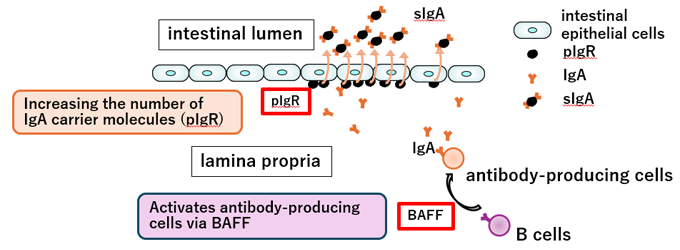The National Agriculture and Food Research Organozation (NARO, President: KYUMA Kazuo) and Nisshin Seifun Group (President: TAKIHARA Kenji) have discovered that alkylresorcinols in wheat bran have immune-enhancing properties. The health benefits of wheat bran consumption have been recognized recently. This research highlights, for the first time, that alkylresorcinols in wheat bran may directly upregulate the immune system.
The identification of this active component was achieved using NARO's patented technology, Sequential Excitation-Emission Matrix (S-EEM) method. This is a novel spectroscopic analytical method that acceleratesthe identification of functional compounds by their specific fluorescence properties.
This finding reveals health-promoting properties of wheat bran and provide opportunities for its application in various health-related products contributing to improve well-being.
Overview
NARO and Nisshin Seifun Group have announced that alkylresorcinol in wheat bran, the outer layer of the wheat grains that makes up approximately 15% of the grain, has a beneficial effect on the immune system.
As part of its ongoing efforts to evaluate the effects of various food on immune function, NARO found that wheat bran consumption maintained the levels of secretory immunoglobulin A (IgA) which is an important antibody, in the intestinal tract. Then NARO initiated a joint research project with the Nisshin Seifun Group to clarify the mechanism of action and identify the responsible components in wheat bran.
The amount of secretory IgA in the intestine is regulated by the production of the IgA and its transport to the intestinal tract by the polymeric immunoglobulin receptor (pIgR) (Fig.). Several components in wheat bran was investigated that improve the production of both BAFF (B cell activating factor, a cytokine essential for the activation of antibody-producing cells) and pIgR by in vitro studies. Then, the researchers introduced the S-EEM method to accelerate the identification of active components in wheat bran, and consequently alkylresorcinols were identified as the component responsible for increasing BAFF.
These results were presented at the 2025 Annual Meeting of the Japan Society for Bioscience, Biotechnology, and Agrochemistry, held in Sapporo, Japan, from March 4-8, 2025.

Fig. Mechanisms for maintaining sIgA levels in the intestinal tract




